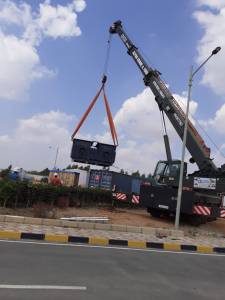Description
Lift Capacities: Understanding Your Lifting Needs
Choosing the right lifting equipment hinges on understanding its lift capacity, a crucial specification determining the maximum weight a device can safely lift. This guide clarifies the importance of lift capacities and how to select the appropriate equipment for your specific application.
What is Lift Capacity?
Lift capacity, often expressed in kilograms (kg) or pounds (lbs), represents the maximum load a lifting device—such as a crane, hoist, forklift, or jack—can handle without exceeding its structural limits. Exceeding this limit can lead to catastrophic equipment failure, potentially causing serious injury or property damage.
Factors Influencing Lift Capacity:
Several factors impact a lifting device's effective lift capacity:
- Equipment Type: Different lifting mechanisms have vastly different capacities. A small hand winch will have a significantly lower capacity than a large industrial crane.
- Boom Length (for cranes): The further the load is extended from the crane's base, the lower the lift capacity becomes. Manufacturers provide load charts detailing capacity at various boom lengths.
- Load Center: The distribution of weight within the load affects capacity. A load with an uneven weight distribution may necessitate a lower capacity setting to ensure stability.
- Environmental Conditions: Extreme temperatures, wind, or other environmental factors can reduce the safe lift capacity.
- Maintenance: Regular maintenance is crucial for ensuring a lifting device operates within its specified capacity. Damage or wear can significantly reduce capacity and increase risk.
- Operator Skill: Proper operation and adherence to safety guidelines are essential for maintaining the integrity of the lifting equipment and operating within the stated capacity.
Understanding Lift Capacity Specifications:
Lift capacity specifications are usually clearly marked on the equipment itself and detailed in the manufacturer's documentation. These specifications should always be strictly adhered to. Look for:
- Maximum Load: The absolute maximum weight the device can lift under ideal conditions.
- Safe Working Load (SWL): A recommended load limit that ensures a substantial safety margin. Always operate within the SWL, which is generally lower than the maximum load.
- Load Charts (for cranes and other complex equipment): These charts graphically represent capacity variations depending on factors such as boom length and load radius.
Consequences of Exceeding Lift Capacity:
Exceeding the lift capacity of any equipment can result in:
- Equipment Failure: Structural damage, breakage, or complete collapse of the lifting device.
- Injury or Death: Falling loads can cause severe injury or fatalities.
- Property Damage: Dropped loads can cause significant damage to property and equipment.
- Legal Liability: Operating equipment beyond its capacity can result in serious legal consequences.
Choosing the Right Equipment:
Always select lifting equipment with a capacity significantly exceeding the anticipated load weight. A safety margin is crucial. Consult with a qualified professional to determine the appropriate equipment and ensure safe lifting practices.
Disclaimer: This information is for general guidance only. Always refer to the manufacturer's instructions and safety guidelines before operating any lifting equipment. Improper use can result in serious injury or death.
